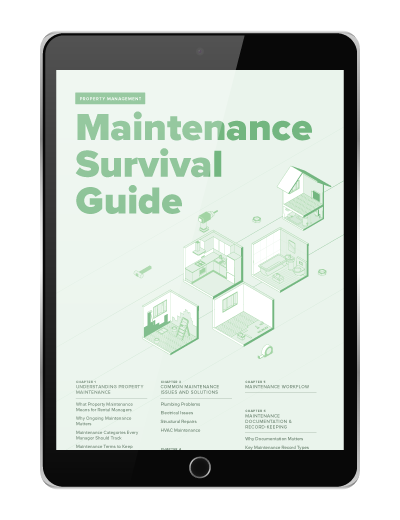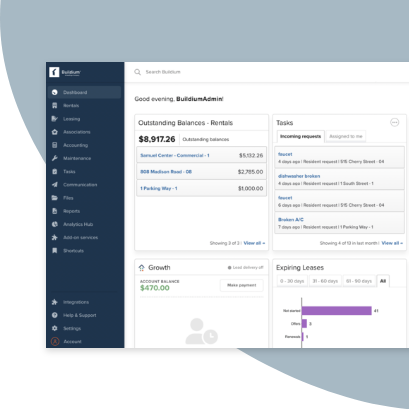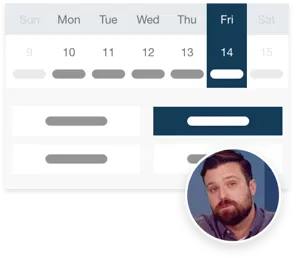Disclaimer: This blog post is meant for informational purposes only and does not constitute legal advice. Consult with a licensed attorney in Connecticut for specific legal guidance.
As a property manager in Connecticut, understanding the state’s lease agreements is one of the first steps in managing any rental property effectively.
Whether you’re new to managing properties or have been doing it for years, this guide will walk you through everything you need to know about Connecticut lease agreements. Plus, you can download a free Connecticut lease agreement template above to help you with the process.
What Is a Connecticut Lease Agreement?
A Connecticut lease agreement is a legal contract between a landlord and tenant that outlines the terms and conditions of the rental arrangement. It includes details such as rent, payment dates, and the responsibilities of both parties. These agreements follow Connecticut’s specific laws, so property managers must pay attention to required disclosures and tenant protections.
Why a Lease Agreement Matters
A well-written lease agreement clarifies both the landlord’s and the tenant’s roles and expectations. Without one, misunderstandings can lead to disputes and costly legal issues. By following Connecticut’s legal guidelines, you can avoid mistakes and keep things running smoothly.
Key Components of a Connecticut Lease Agreement
1. Rent and Payment Terms
A Connecticut lease agreement must clearly list the rent amount, payment schedule, and accepted payment methods. Property managers and tenants must agree on the rent, and it is usually due on a monthly basis.
- Rent Due Date: Typically the 1st of each month, unless stated otherwise.
- Late Fees: Connecticut law allows late fees, but they must be reasonable and clearly stated in the lease.
2. The Security Deposit
The security deposit is an important part of any lease agreement. Connecticut limits the amount landlords can charge for the deposit:
- For a 1-year lease: The deposit can’t exceed two months’ rent.
- For leases under one year: The deposit can’t exceed one month’s rent.
When the tenant moves out, Connecticut law requires the deposit to be returned within 30 days, minus any deductions for damages or unpaid rent.
3. Terms of the Lease
The lease term outlines the rental period, which can either be a fixed-term lease (such as 12 months) or a month-to-month agreement.
- Fixed-Term Lease: This lease lasts for a set period, like one year, and both parties must stick to the terms until it ends.
- Month-to-Month Lease: Either party can end the lease with a 30-day written notice.
4. Maintenance and Repairs
Your lease should clearly state who is responsible for property maintenance and repairs. Tenants typically handle minor repairs (e.g., replacing lightbulbs), while landlords manage major repairs (e.g., fixing plumbing or electrical issues).
5. Utilities
Your lease agreement must specify which utilities are the tenant’s responsibility. For example, if the tenant must pay for electricity, water, or gas, it should be noted clearly. If you include utilities in the rent, make sure to specify any limits on usage.
Legal Requirements and Mandatory Disclosures in Connecticut Lease Agreements
Let’s delve into some of the most important addenda and disclosures for Massachusetts lease agreements. This list is not exhaustive, so consult a legal professional if you’re unsure about what to include in your own agreements.
1. Lead Paint Disclosure
If your rental property was built before 1978, Connecticut law requires you to include a Lead Paint Disclosure. This informs tenants about the potential risks of lead paint, especially in homes with young children. Missing this disclosure could lead to penalties.
2. Smoke and Carbon Monoxide Detector Disclosure
Connecticut law requires landlords to provide smoke detectors and carbon monoxide detectors in rental properties. The lease must mention their presence and the landlord’s responsibility for maintaining them.
- Tenant Responsibility: Tenants must notify the landlord if a detector isn’t working.
- Landlord Responsibility: The landlord must replace the batteries or install new detectors when needed.
3. Bedbug Addendum
Connecticut requires landlords to include a bedbug addendum in the lease. This outlines the tenant’s responsibilities in preventing and treating bedbug infestations, helping to avoid disputes later on.
4. Fair Housing Act Compliance
Both state and federal laws require all leases in Connecticut to follow the Fair Housing Act. This means landlords cannot discriminate against tenants based on race, color, national origin, religion, sex, familial status, or disability. Make sure your lease reflects these protections to avoid legal issues.
Why Compliance Matters
Sticking to Connecticut’s leasing laws doesn’t just keep you out of legal trouble—it also helps your business thrive. Here’s why compliance is so important:
- Avoid Legal Issues: A properly written lease protects you from lawsuits and legal disputes.
- Improve Tenant Relations: Clear agreements help keep both parties happy and prevent misunderstandings.
- Maintain Your Property: A solid lease outlines how tenants should care for your property, preventing unnecessary damage.
Penalties for Noncompliance
If you don’t follow Connecticut’s lease agreement laws, you could face serious consequences:
- Fines: Missing mandatory disclosures can lead to fines.
- Legal Action: Tenants may take legal action if the lease is not in compliance.
- Lease Termination: Noncompliance could also invalidate the lease, giving tenants the right to terminate it early.
By following Connecticut’s lease laws, you protect your property, avoid fines, and create better relationships with your tenants.
Download Your Free Connecticut Lease Agreement Template
To help you create a legally compliant lease agreement, download our free Connecticut lease agreement template above. This easy-to-use template will save you time and help you stay on top of Connecticut’s leasing requirements.
If you want to set up an even faster leasing process, consider testing out Buildium’s comprehensive property management software. You can give it a try with a 14-day free trial or by signing up for a guided demo.


